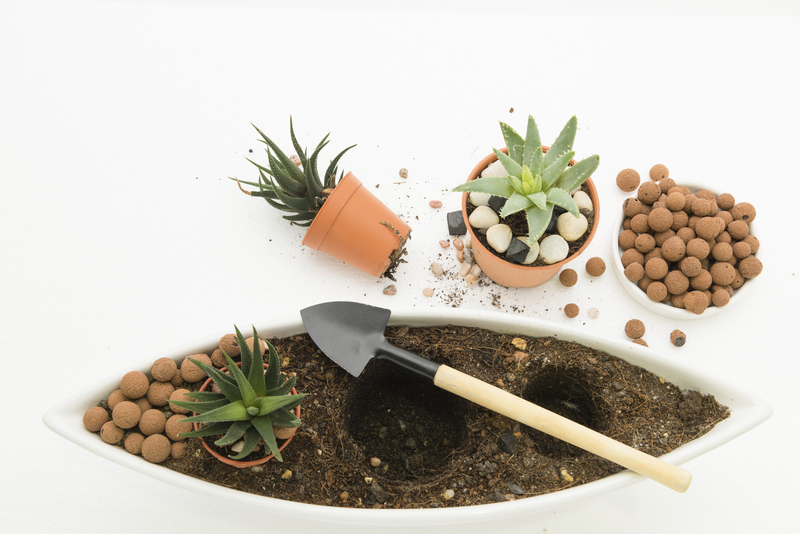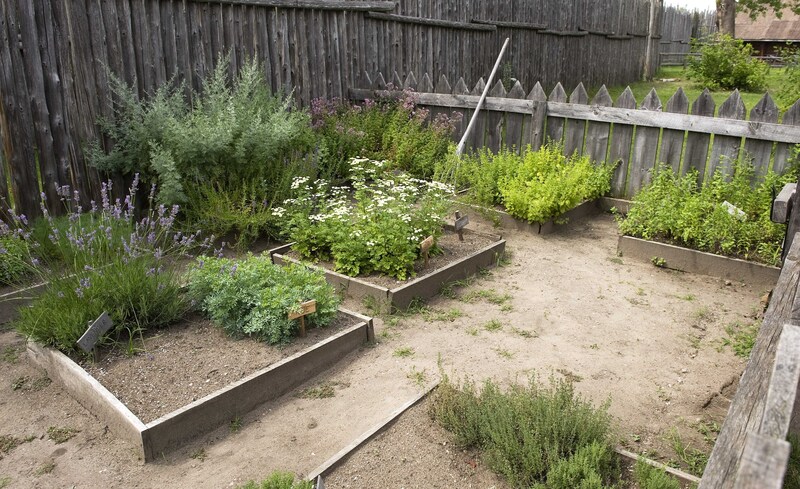Crafting Nutrient-Rich Soil through Organic Waste Transformation
Posted on 01/09/2025
Crafting Nutrient-Rich Soil through Organic Waste Transformation
Crafting nutrient-rich soil is an essential step for gardeners, farmers, and sustainability advocates. In today's eco-conscious world, transforming organic waste into fertile soil is not only a responsible choice but also a highly effective one. Through proper organic waste transformation, anyone can easily build healthy soil to support lush plants and bountiful harvests. This guide delves into the science, techniques, and profound benefits of turning kitchen scraps and yard clippings into robust, life-sustaining earth.

Understanding the Basics of Soil Enrichment
Nutrient-rich soil lays the foundation for every thriving garden or farm. The process of improving soil quality through organic waste transformation goes beyond dumping scraps into a pile; it involves purposeful practices that harness natural biological processes to restore and enhance soil health.
What Is Organic Waste?
Organic waste refers to any material that is biodegradable and comes from plants or animals. Common sources of organic waste include:
- Fruit and vegetable scraps
- Coffee grounds and tea leaves
- Eggshells
- Grass clippings and leaves
- Wood chips and small branches
- Animal manure (from herbivores)
When these materials decompose, they release valuable nutrients back into the soil, improving its structure, fertility, and ability to retain moisture. Soil enrichment through composting or other organic waste transformation methods brings life to infertile, depleted ground.
The Science Behind Transforming Organic Waste
At the microscopic level, a vast array of bacteria, fungi, and invertebrates work tirelessly to break down organic matter. This biological process creates humus--an essential component of nutrient-rich soil--which stores nutrients, improves soil texture, and promotes healthy root systems.
- Bacteria initiate decomposition by digesting simple sugars and proteins.
- Fungi break down tougher fibers and woody material.
- Invertebrates such as earthworms and beetles physically shred organic material, speeding up the decomposition process.
Why Organic Waste Transformation Matters
Environmental Benefits
Reducing landfill waste is one of the biggest advantages of composting and organic waste recycling. Organic material in landfills can generate methane, a potent greenhouse gas. By converting waste into nutrient-dense soil, you help lower your carbon footprint and support healthier ecosystems.
Enriching Soil Naturally
Chemical fertilizers provide plants with immediate nutrients, but they rarely improve the underlying structure of the soil. In contrast, organic soil creation methods continually restore the soil's long-term productivity. These natural approaches foster beneficial microbes and earthworms, both of which are vital for sustainable gardening and agriculture.
Closing the Nutrient Loop
By transforming organic waste into rich soil, households and communities can create a closed-loop system--one where nutrients are endlessly recycled rather than lost. This eco-friendly approach promotes resilience and food security, especially in urban environments or areas with poor natural soil.
Methods for Transforming Organic Waste into Fertile Soil
1. Composting: A Time-Tested Approach
Composting is the simplest and most widely-used strategy for crafting nutritious soil from organic waste. The process uses a balance of "greens"--such as kitchen scraps or grass clippings--and "browns"--including dried leaves or paper--to foster aerobic decomposition.
- Add alternating layers of green and brown materials to promote balanced decomposition.
- Maintain moisture similar to that of a wrung-out sponge.
- Turn the compost regularly to aerate and speed up the process.
- Avoid adding meat, dairy, and oily materials, as these can attract pests and slow decomposition.
Within 2-6 months, depending on temperature and materials, you'll have organic-rich compost that can be mixed directly into garden beds or used as mulch on the soil surface.
2. Vermicomposting: Using Worms to Accelerate Decomposition
Vermicomposting harnesses the unique digestive systems of earthworms--primarily red wigglers--to break down organic waste into highly fertile worm castings. This method is especially effective for indoor composting or small spaces.
- Set up a worm bin with bedding materials (shredded newspaper, coconut coir).
- Add small amounts of fruit and vegetable scraps regularly.
- Keep the bin damp and avoid excess food buildup to prevent odors.
- Harvest worm castings every few months for use in soil or as a compost tea.
Vermicompost is exceptionally rich in plant-available nutrients and beneficial microbes, making it a prime ingredient for nourishing soil.
3. Bokashi: Ferment and Fertilize
Bokashi is a Japanese technique that uses Effective Microorganisms (EM) to ferment organic waste. Unlike traditional composting, bokashi can process cooked foods, meats, and dairy products. The fermented matter can then be buried or added to compost for complete decomposition.
- Layer food waste with EM bran in an airtight container.
- Once full, allow it to ferment for 2-3 weeks.
- Bury the fermented waste in soil, where it decomposes rapidly and enriches the ground.
Bokashi composting is ideal for those with limited outdoor space and generates virtually no odors or pests.
4. Mulching and Sheet Composting
Mulching involves spreading organic materials--like grass clippings or leaves--directly onto garden soil. Over time, these materials break down in place, releasing nutrients and improving soil texture. Sheet composting, or "lasagna gardening," uses similar layers of organic matter to quickly craft new garden beds.
- Layer "greens" and "browns" directly onto the soil surface.
- Allow each layer to break down naturally.
- Plant directly into the improved earth after several months.
Both methods protect soil from erosion and save time by combining transformation with soil enrichment.
Best Practices for Organic Soil Crafting
Balancing Carbon and Nitrogen
Achieving the perfect compost hinges on balancing the carbon-to-nitrogen ratio (C:N):
- Carbon-rich "browns": Dry leaves, twigs, cardboard (C:N ratio 30:1-300:1)
- Nitrogen-rich "greens": Grass clippings, fruit scraps, coffee grounds (C:N ratio 10:1-20:1)
Aim for an overall C:N ratio of roughly 30:1. Too much nitrogen can cause odors and wet, compact compost; too much carbon slows down decomposition.
Moisture and Air: Keys to Microbial Health
Soil microbes--those tiny workhorses transforming your organic waste--require three things:
- Oxygen, provided by regular turning or the addition of coarse materials, helps maintain aerobic conditions.
- Moisture, ideally like a damp sponge, ensures microbes can function efficiently.
- Warmth, usually available outdoors in spring and summer or in closed systems year-round.
What Not to Compost
For a healthy, nutrient-rich product, avoid composting the following:
- Meat, dairy, and fats (unless using bokashi)
- Diseased plants or weeds with seeds
- Pet waste (especially from carnivores)
- Glossy or chemically-treated papers
- Large branches unless chipped first
Benefits of Nutrient-Rich Soil from Organic Waste
For Plants
- Improved growth due to a steady supply of essential nutrients
- Stronger root systems and enhanced resistance to diseases
- Greater water retention, reducing the need for frequent watering
- Natural suppression of pests through increased microbial activity
For the Environment
- Reduced landfill waste and lower greenhouse gas emissions
- Protection of waterways by minimizing fertilizer runoff
- Support for pollinators and soil biodiversity
Tips and Troubleshooting for Home Composting
Common Challenges
- Odors: Usually caused by excess moisture or lack of aeration. Add dry materials or turn the pile more often.
- Pests: Avoid adding processed foods, meats, or fats. Cover food scraps with a layer of soil or browns.
- Slow decomposition: Check the carbon-to-nitrogen balance and ensure adequate moisture and oxygen.
Ensuring Quality Soil Output
Sift finished compost to remove large pieces and add them back to the pile for further breakdown. Mature compost should smell earthy, not rotten, and boast a dark, crumbly texture.
Scaling Up: Community and Agricultural Applications
Community Compost Programs
Urban and suburban areas are increasingly adopting community composting programs. Residents deposit their organic waste at centralized locations, where larger piles or in-vessel systems process tons of material. This generates significant volumes of nutrient-rich soil amendments to support parks, schools, and local gardens.
Larger Scale Organic Waste Transformation
Farmers and landscapers can use windrow composting, static piles, or even commercial digesters to recycle manure, crop residues, and yard trimmings. By integrating composting into their operations, they:
- Reduce fertilizer costs
- Minimize soil erosion and runoff
- Boost soil organic matter for improved yields
Advanced Techniques in Organic Waste Transformation
Biochar: Supercharging the Soil
Biochar is a form of charcoal produced from organic materials through pyrolysis (heating without oxygen). When blended with compost, it enhances soil's water holding capacity, carbon content, and resilience.
Anaerobic Digestion
This process uses bacteria to break down animal manures, food waste, and other organic materials in the absence of oxygen, generating biogas and a nutrient-rich digestate. The digestate can be applied as a potent organic soil amendment.

Frequently Asked Questions About Crafting Healthy Soil
How long does it take to create nutrient-rich soil from organic waste?
Depending on the method, temperature, and materials used, the process can take anywhere from 2 months (hot composting) to 12 months (cold composting or sheet mulching).
Can I craft rich soil indoors?
Absolutely! Vermicomposting and bokashi composting are both excellent for indoor use. With just a small bin under the sink or on a balcony, apartment dwellers can transform food scraps into valuable soil amendments.
Conclusion: Start Transforming Organic Waste into Living Soil Today
In summary, crafting nutrient-rich soil through organic waste transformation is one of the most effective ways to build sustainable gardens, nourish crops, and heal the planet. By adopting simple composting, vermicomposting, or mulching techniques--at home or as a community--you can turn waste into a powerful resource.
Every banana peel and leaf you recycle helps create a richer, healthier world below your feet. Start your journey today, and witness the profound benefits of living soils for plants, the environment, and future generations.

